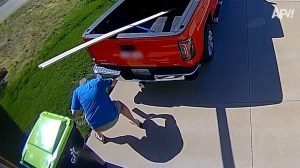Derek Muller of Veritasium (previously) consulted with Professor Steven Strogatz to explain the phenomenon of synchronization inevitably arising from chaos. In doing so, the pair talk about the wobbily opening of the Millennium Bridge in London, the history of pendulums, coordinated fireflies, and even a reliably oscillating chemical reaction.
The second law of thermodynamics tells us that everything in the universe tends towards disorder. And in systems, chaos is the norm. So you’d naturally expect the universe to be messy. And yet, we can observe occasions of spontaneous order, the synchronization of metronomes, the perfectly timed orbits of moons, the simultaneous flashes of fireflies, and even the regular beating of your heart. What puts these things in order in spite of nature’s tendency for disorder.
This particular phenomenon is explained by natural frequencies and the close proximity to others that are perpetuating a similar motion, as first discovered by Dutch physicist Christiaan Huygens in the mid-17th century who was testing out seaworthy clocks of his own design.
When he separated the clocks, the synchrony would disappear, their times drifting apart. But when he brought them back together, the synchrony returned. Wiggins realized the two clocks were synchronizing because they were hung from the same wood beam. He transferred mechanical vibrations from one clock to the other, making the two oscillators coupled.







